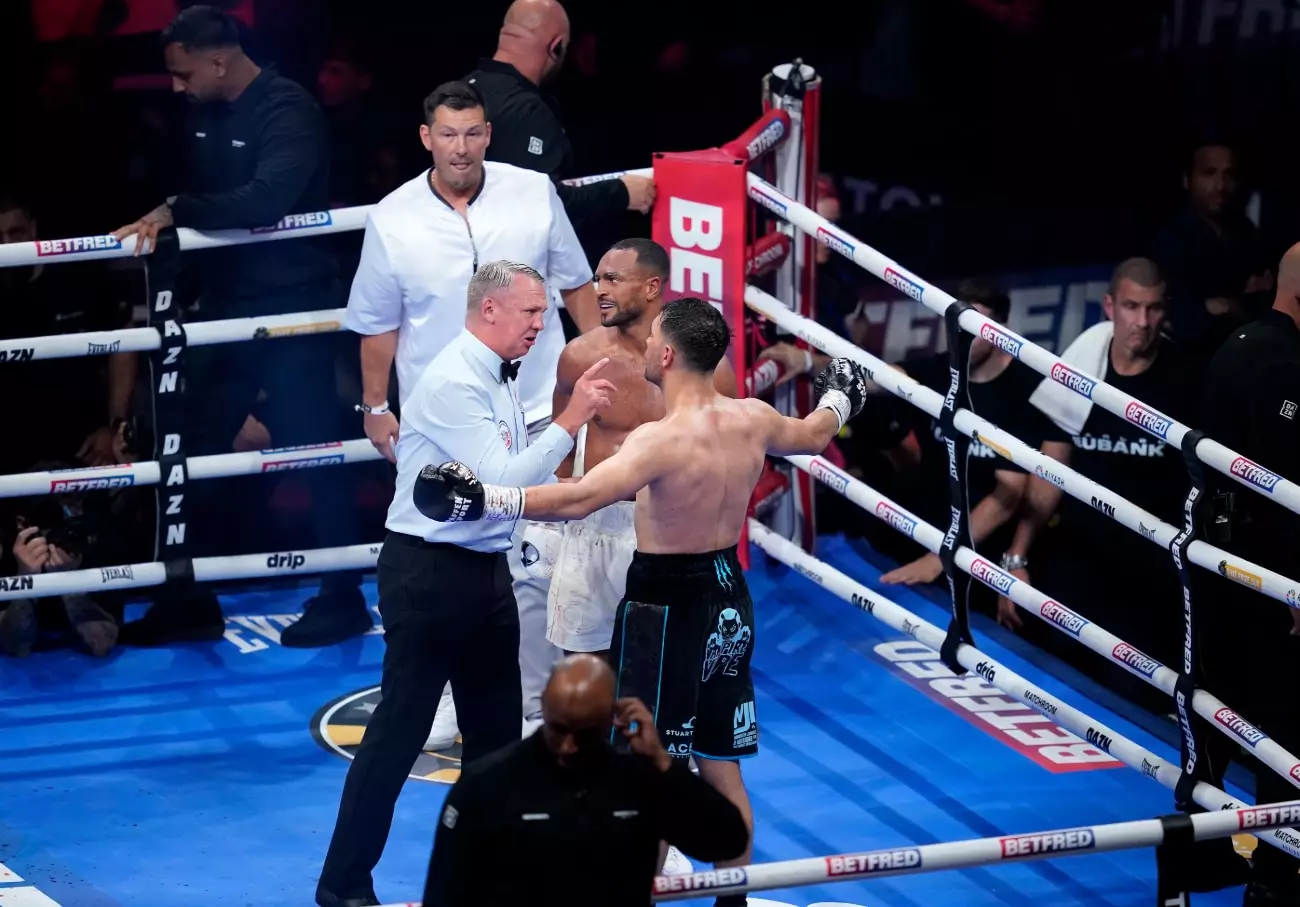In the realm of competitive sports, few moments evoke as much frustration as a fight halted prematurely, especially when the bout was anticipated to deliver excitement and showcase talent. Last night’s clash between Jack Catterall and Harlem Eubank epitomized this dilemma—a fight marred by chaos, unintentional injury, and unresolved tension. Instead of a compelling narrative of strength and skill, viewers were left with a fragmented spectacle that did little to satisfy or inspire. But more than mere disappointment, this fight underscores deep issues within boxing’s current landscape: safety protocols, judging ambiguities, and the relentless pursuit of spectacle over substance.
The Fight Itself: A War of Attrition Turned Frustration
The encounter started cautiously, but chaos quickly ensued. Both fighters displayed reluctance to fully commit, perhaps influenced by the growing tension inside the ring. An unfortunate head clash in the third round changed the course of the contest, leading to a public spectacle of blood and concern. Catterall sustained a severe cut, necessitating intervention. The referee, alongside the ringside doctor, faced a critical decision: continue or halt the fight for safety? Their decision unwound amidst controversy, culminating in the stoppage that denied both fighters the chance to produce a memorable bout.
This abrupt conclusion left a bitter taste. For Eubank, it was an unwelcome stumble, breaking his winning streak and raising questions about his readiness for the next step in his career. For Catterall, the victory was technically clean but overshadowed by the disorganized nature of the fight. The decision to stop the fight, although justified on medical grounds, raised eyebrows about how such injuries are managed and how they influence the future trajectory of fighters.
The Power of Perception: How Damage and Decision-Making Shape Careers
In boxing, perception often matters as much as the outcome itself. A well-worn platitude states that “a win is a win,” but the manner of victory can redefine a fighter’s path. Catterall’s technical decision win earns him a notable record boost, but questions about his ability to handle adversity and engagement remain. Meanwhile, Eubank’s loss exposes vulnerabilities, especially in high-stakes environments meant to elevate or deliver closure.
The decision to halt the fight amid the chaos reveals the delicate balance officials must maintain: ensuring safety without sacrificing fairness or the sport’s integrity. Critics debate whether the stoppage was premature or necessary, but one thing remains clear—the decisive moment demonstrates how health concerns can swiftly overshadow competitive merit. As the sport evolves, so must the protocols to better handle these injuries, fostering a climate where fighters are protected without denying fans the thrill of a genuine contest.
The Road Ahead: From Controversy to Opportunity
For Catterall, this fight opens doors to elite matchups that can cement his position at the top of the division. Promoters like Eddie Hearn are eager to position him against marquee names such as Ryan Garcia, Rolly Romero, or Devin Haney. This approach, driven by pragmatism and commercial interest, pushes the narrative of boxing as a sport of spectacle but also poses questions about how such narratives are crafted amidst controversy.
Eubank’s immediate call for a rematch hints at a resilient spirit, but the reality on the ground suggests a need for strategic recalibration. A fighter’s career can be made or broken by how they rebound from setbacks—be it a technical loss, injury, or the perception of a lackluster performance. For Eubank, the path forward involves not only technical improvements but also psychological fortitude to handle the high-pressure environment of top-tier boxing.
The Broader Implications: Navigating the Future of the Sport
The evening’s proceedings serve as a microcosm of boxing’s ongoing challenges: balancing the brutality and unpredictability that make it compelling with the safety protocols that modern sports demand. The media, fans, and stakeholders must examine whether current standards adequately protect fighters without compromising the integrity of the competition. Debates around stoppages, cuts, and refereeing decisions highlight the inherent subjectivity in the sport—yet, these are core elements that shape fighter legacies.
What is undeniable is that boxing’s future hinges on how well it manages these complexities. Will regulations evolve to prioritize fighter safety more effectively, or will the desire for sensationalism and marketability continue to influence decisions? This fight, with its chaos and controversy, prompts introspection about the sport’s direction. A sport that truly respects its fighters and its fans needs to confront these issues head-on, rather than allow moments of disorder to define its narrative.
This clash between chaos and control will determine whether boxing remains a sport of noble battles or descends further into spectacle-driven chaos. More importantly, it challenges us all to think about what we truly value in combat sports—fierce competition, safety, transparency, or the spectacle that sells. Only time will tell whether boxing can learn from such imperfect nights and emerge stronger, more disciplined, and more just.

